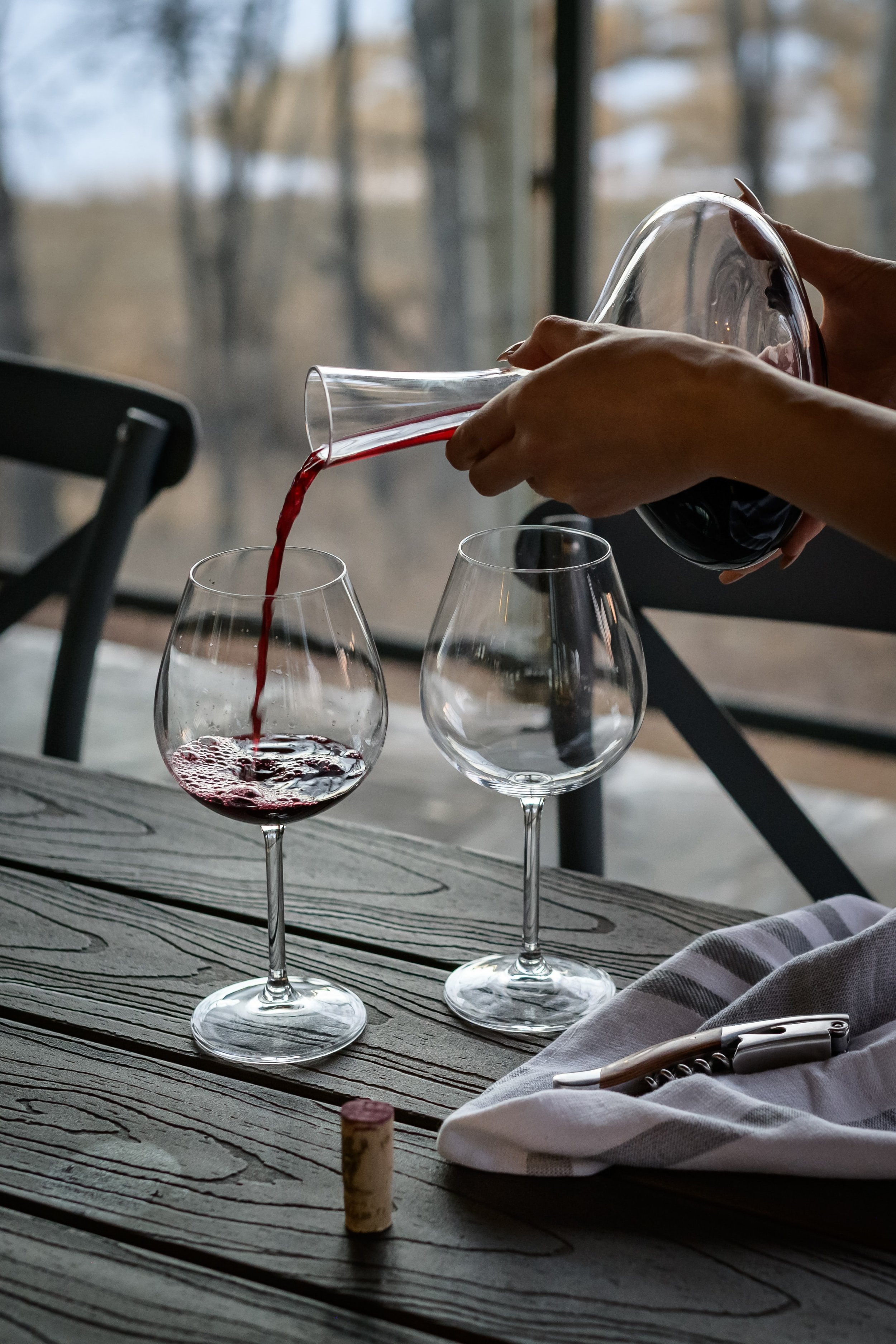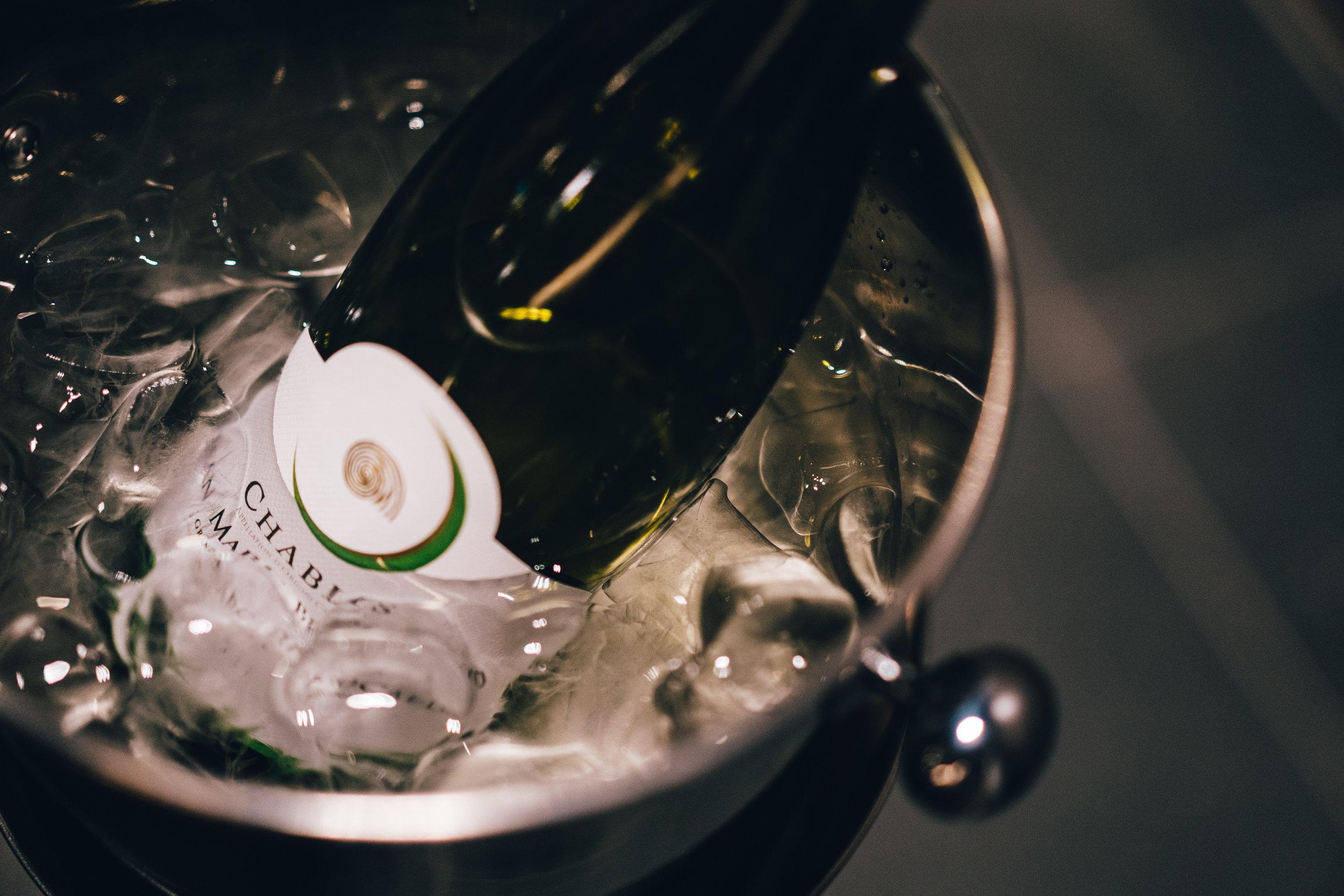Decanting Digest - Level up your wine tasting experience with temperature control
/One of the first things we learn as we take an interest in wine is how to serve it: red at room temperature, and white, rosé, and sparkling wines at fridge temperature.
That’s a decent basic rule of thumb.
However, if you want to take the tasting experience to a new level, try finding the right serving temperature for your wine of choice.
You’ll find plenty of varying expert opinions on this, so it’s best to treat the information below as a guideline and do more in-depth research if you’re trying to get the most out of a particularly special bottle.
Here are the temperature ranges to aim for with different styles of wine:
Bold Reds
To take a bit of the bite out of tannin-heavy reds like Cabernet or Syrah/Shiraz, aim for a serving temperature of 15 to 20 degrees. This is just slightly off room temperature; the bottle should feel just a bit cool to the touch. Going too far into colder territory can emphasize a red wine’s undesirable traits, so chill these wines carefully: from room temperature, place the bottle in the fridge for no more than 30 minutes, or leave it in the fridge overnight and take it out and decant it 30 to 45 minutes before serving.
Full-bodied Whites and Light Reds
For wines that live in the space between crisp white or heavy red — think flavourful Chardonnay or light and fruity Pinot noir — you’ll want to aim for a serving temperature of 10 to 15 degrees C. To achieve this, start them from room temperature and place them in the fridge for 30 minutes to an hour, or store them in fridge overnight and take them out roughly 15 to 20 minutes before serving.
Sparkling Wines, Light-bodied Whites, and Rosés
Aim for a range of 4 to 10 degrees C for most white wines and rosés, providing a little more time to warm up for more complex examples like a nuanced Champagne or more flavourful rosé. Crisper and lighter examples can be served right out of the fridge, while those with more complexity will benefit from being out of the fridge for 15 to 20 minutes before serving. Don’t throw these straight back into the fridge by default once the first round of glasses is poured: most will open up and evolve nicely if left to sweat it out on the counter.
Tips for Finding the Right Temperature
If your wine of choice has an overpowering alcohol scent on the nose, try serving it colder. (Serving colder can also make lower-quality wines more palatable.)
If you find a wine’s flavours are very muted, try letting it warm up.
To cool a wine off quickly, place the bottle in ice water for 15 to 30 minutes. Alternatively, you can place a still-corked bottle in the freezer for 15 minutes. (Don’t forget about it, though, or you’ll have a ruined bottle of wine and a mess on your hands.)
To warm a wine up quickly, run the outside of a glass or crystal decanter under hot tap water until it’s very warm to the touch, then decant the contents of the bottle into it and let it sit for a few minutes.
Wine will naturally warm up over time as it sits in glasses and is exposed to the surrounding air, so start on the cooler side to work your way to the best temperature.
Steph is a successful, established freelance writer and has been a wine aficionado for more than two decades. Connect with her on Twitter and Instagram.
Decanting Digest appears every other Wednesday.
Send your wine questions to info@modernmississauga.com with Decanting Digest in the subject line.














